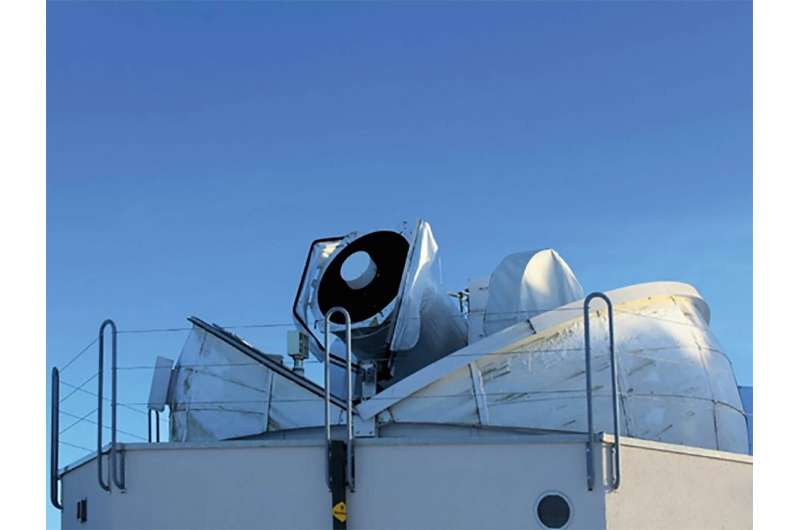Space debris observed for the first time during the day

On the afternoon of February 10, 2009, the operational communications satellite Iridium 33 collided with the obsolete Cosmos 2251 communications satellite over Siberia at an altitude of roughly 800 kilometers. The collision was at a speed of 11.7 kilometers a second and produced a cloud of more than 2,000 pieces of debris larger than ten centimeters. This debris spread out over an extensive area within a few months and has been threatening to collide with other operational satellites since then. This event was a wake-up call for all satellite operators, but also for politicians. "The problem of so-called space debris—disused artificial objects in space—took on a new dimension," says Professor Thomas Schildknecht, head of the Zimmerwald Observatory and deputy director of the Astronomical Institute at the University of Bern.
The near-Earth space is getting tight
In certain orbital regions, the risk of collisions is already so high that active satellites must regularly perform maneuvers to avoid debris. The European Space Agency ESA processes thousands of collision warnings per satellite per year for its fleet of satellites and carries out dozens of maneuvers per year. In most cases, the potential collision partner is one of about 20,000 known space debris objects. "Unfortunately, the orbits of these disused satellites, launcher upper stages or fragments of collisions and explosions are not known with sufficient accuracy, i.e. only to a few hundred meters," explains Schildknecht. It is therefore often impossible to decide whether an evasive maneuver, which is very costly in each case, is even necessary and really reduces the risk.
Accurate orbits thanks to laser distance measurements
The measurement of distances to such objects using the satellite laser ranging method is an effective technology to improve the trajectory accuracy to a few meters. "We have been using the technology at the Zimmerwald Observatory for years to measure objects equipped with special laser retroreflectors. Only a few observatories worldwide have succeeded in determining distances to space debris using special, powerful lasers to date," Schildknecht continues. These measurements were also previously only possible at night.
The breakthrough—daytime observations using a geodetic laser
On June 24, 2020, researchers from the University of Bern succeeded for the first time ever in carrying out daylight observations of space debris using a geodetic laser at the Swiss Optical Ground Station and Geodynamics Observatory Zimmerwald. Geodetic laser systems are at least one order of magnitude less powerful than highly specialized space debris lasers. In addition, the detection of the individual laser photons diffusely reflected by the space debris objects in the flood of the bright daytime sky's background photons poses a particular challenge. The success at Zimmerwald Observatory was only possible thanks to the combination of active tracking of the debris using a highly sensitive scientific CMOS camera with real-time image processing and a real-time digital filter to detect the photons reflected by the object.
Thomas Schildknecht comments on this: "The possibility of observing during the day allows for the number of measures to be multiplied. There is a whole network of stations with geodetic lasers, which could in future help build up a highly precise space debris orbit catalog. More accurate orbits will be essential in future to avoid collisions and improve safety and sustainability in space."
Provided by University of Bern




















